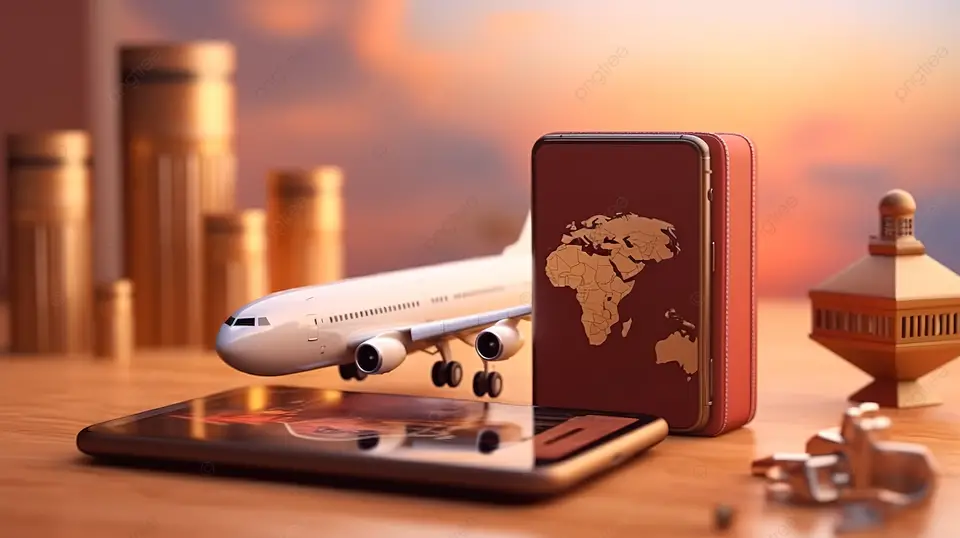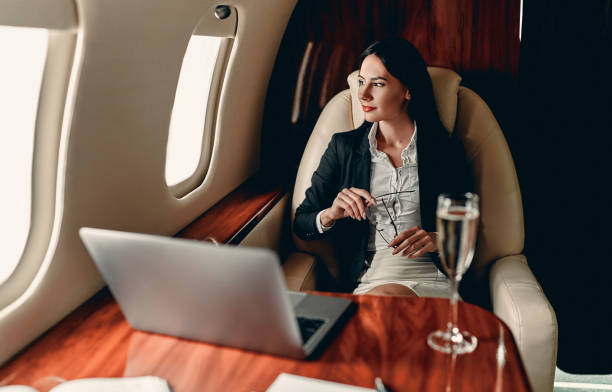Embarking on your first flight can be an exhilarating yet somewhat daunting experience. The prospect of navigating through airports, boarding a plane, and soaring through the skies may raise a myriad of questions for first-time flyers.
Fear not, as this guide on “How To Travel In Flight First Time” is designed to provide essential insights and step-by-step instructions to ensure a seamless and enjoyable initiation into air travel.
From choosing the right airline to packing your essentials, this guide will cover key aspects to help you embark on your maiden flight with confidence and ease.
So, fasten your seatbelt and let’s navigate the skies together as we unravel the essentials of first-time air travel.
1. Booking and Preparation

Choose Airline
Selecting the right airline is a crucial first step when planning your first-time air travel. Consider factors such as reputation, customer reviews, and the services offered by different airlines.
Research the amenities, seating arrangements, and any additional fees that may apply. Choose an airline that aligns with your preferences and budget.
Select Convenient Time
When booking your flight, pay attention to the departure and arrival times. Opt for a schedule that suits your comfort and aligns with your travel plans.
Factor in the time it takes to get to the airport, check-in, and go through security. Choosing a convenient time will help make your first air travel experience smoother.
Compare Prices
Compare ticket prices across different platforms and airlines to ensure you get the best deal. Utilize online travel agencies, airline websites, and third-party platforms to find competitive prices.
Keep in mind that prices may vary depending on the time of booking, so try to plan and purchase your tickets well in advance.
Check Passport and Visa
Ensure that your passport is valid for at least six months beyond your planned return date. Additionally, check the visa requirements for your destination country and obtain the necessary visas well in advance.
Failure to meet these requirements could result in denied entry, so it’s essential to address these aspects during the booking and preparation phase.
Gather Necessary Documents
Compile all necessary documents, including your boarding pass, identification, and any required travel permits.
Organize these documents in a travel wallet or folder for easy access during your journey. Having everything in order will reduce stress and save time at the airport.
Pack Essentials
Pack your essentials carefully, considering the duration of your trip and the climate at your destination.
Remember to include any prescription medications, travel-sized toiletries, chargers, and important personal items.
Check the airline’s baggage policies to avoid any unexpected fees or issues at the airport.
2. Getting to the Airport
Arrange Transportation
When preparing for your first flight, ensuring a smooth journey to the airport is paramount. Arrange transportation well in advance, whether it’s a ride from a friend or family member, a taxi, or a rideshare service.
Confirm the pick-up details and account for potential traffic or unexpected delays to ensure you reach the airport with ample time before your departure.
Consider Delays
Accounting for potential delays is crucial in the journey to the airport. Traffic, unforeseen circumstances, or transportation hiccups can impact your schedule.
Plan for extra time to accommodate these uncertainties, reducing stress and allowing for a more relaxed travel experience.
Being proactive about potential delays sets the stage for a smoother start to your journey.
Early Arrival
Arriving at the airport early is a golden rule for first-time flyers. Aim to be at the airport at least two to three hours before your scheduled departure time.
This provides a buffer for check-in procedures, security checks, and unforeseen circumstances. Early arrival not only ensures that you have sufficient time to navigate through the airport but also allows you to address any issues that may arise without feeling rushed.
3. Airport Procedures
Check-In
Upon reaching the airport, the first step is the check-in process. Depending on your airline, you can check in online or at the airport counters.
Online check-in is convenient and allows you to print your boarding pass or receive a digital version on your phone.
At the airport, follow the signs to the check-in counters if needed. Ensure you have all necessary documents, including your identification and reservation details, ready for a smooth check-in experience.
Security
Navigating airport security is a crucial step in airport procedures. Be prepared to remove your shoes, belt, and any items from your pockets before passing through the security scanner.
Place liquids in a clear, resealable bag and follow any specific guidelines provided by the airport and airline.
Familiarize yourself with the security regulations to expedite the process and avoid unnecessary delays.
Baggage Check
If you have checked baggage, proceed to the designated area to drop off your luggage. Ensure that your bags comply with the airline’s weight and size restrictions to avoid additional fees.
Attach the provided baggage tags securely, and double-check that your essentials, such as medications and important documents, are in your carry-on bag.
With your check-in and security procedures completed, you’re one step closer to boarding your first flight.
4. Waiting at the Gate

Find Departure Gate
After passing through security, locate your departure gate by following the airport signage. Pay attention to announcements and electronic screens displaying departure information.
Familiarize yourself with the gate number and any boarding time updates to stay informed and organized.
Check Updates
While waiting at the gate, stay informed about any announcements or updates regarding your flight. Keep an eye on the electronic departure boards for any changes in boarding times or gate information.
Being proactive in monitoring updates ensures that you’re ready to board when the time comes.
Relax and Double-Check
As you wait for your flight, take a moment to relax. Grab a snack, hydrate, and use the restroom if needed. Double-check that you have all essential documents, including your boarding pass and identification.
Ensure your electronic devices are charged and ready for use during the flight. Taking these steps allows you to board with confidence and enjoy the exciting journey ahead.
5. Boarding
Wait for Row/Group
As your departure time approaches, airport staff will typically call passengers to board in specific rows or groups.
Be patient and wait for your turn, allowing those with assigned rows or priority access to board first. Boarding in an organized manner helps maintain efficiency and minimizes congestion in the boarding area.
Present Documents
Once it’s your turn to board, have your documents ready for inspection. Present your boarding pass and identification to the airline staff.
Ensure that you have these documents easily accessible, as this will expedite the boarding process and prevent unnecessary delays.
Follow Boarding Instructions
Listen attentively to the boarding instructions provided by the airline staff. They will guide you through the boarding process, indicating the correct boarding lane and any additional information you may need.
Follow these instructions to board the aircraft smoothly and efficiently.
6. During the Flight
Listen to Safety Briefing
Upon settling into your seat, pay close attention to the safety briefing delivered by the flight attendants. Familiarize yourself with the location of emergency exits, the use of oxygen masks, and other essential safety information.
Even if it’s not your first time flying, these instructions are crucial for your safety and the safety of others on board.
Follow Crew Instructions
Throughout the flight, follow the instructions provided by the flight attendants and crew. This includes adhering to seatbelt signs, stowing your belongings during takeoff and landing, and following any specific guidelines outlined by the airline.
The crew is there to ensure a safe and comfortable journey for all passengers.
Enjoy the Flight
Once in the air, relax and enjoy the experience of flying. Take advantage of in-flight entertainment, read a book, or simply gaze out the window to appreciate the views.
Stay hydrated, and if the flight is long, consider stretching your legs periodically. Embrace the journey, and before you know it, you’ll be arriving at your destination.
7. Arrival

Listen for Landing
As the aircraft descends, pay attention to the captain’s announcements and any instructions from the flight crew.
Be prepared for the sensation of landing, which may include changes in cabin pressure. Listen for cues indicating that the plane has safely touched down, signaling the beginning of your arrival.
Follow Disembarking Instructions
Once the plane has come to a complete stop and the seatbelt sign is turned off, follow the disembarking instructions provided by the flight attendants.
Depending on the airline and aircraft, passengers may be asked to disembark row by row or follow a specific procedure. Be patient and wait for your turn to exit the plane.
Collect Baggage if Needed
If you checked baggage, proceed to the designated baggage claim area. Follow signs and monitors indicating the carousel for your flight.
Wait for your luggage to arrive, and ensure that you collect all your belongings. Double-check the tags to confirm that the bags belong to you before leaving the baggage claim area.
8. Post-Flight
Reflect on Experience
Take a moment to reflect on your first-flight experience. Consider the aspects you enjoyed and any challenges you encountered.
Reflecting on the journey can enhance your future travels by helping you identify preferences and areas for improvement.
Note Lessons Learned
As a first-time flyer, there are likely valuable lessons to be learned from your experience. Consider making notes about what went well and any aspects you would handle differently next time.
This could include refining your packing strategy, streamlining airport procedures, or adjusting your in-flight routine. These insights will contribute to smoother and more enjoyable future flights.
Related Topics:
Conclusion
Embarking on your first flight is a milestone that introduces you to the exciting world of air travel. From the initial booking and preparation to the arrival at your destination, the journey is filled with new experiences and lessons.
By following the steps outlined in this guide on “How To Travel In Flight First Time,” you’ve equipped yourself with the knowledge and confidence needed to navigate airports, board a plane, and enjoy the flight.
Remember that each journey is a learning opportunity, and as you reflect on your first-flight experience, you’ll discover valuable insights that will enhance your future travels.
Embrace the adventure, stay open to new experiences, and soon, the thrill of flying will become a familiar and enjoyable part of your exploration of the world. Safe travels!
FAQs
What should I consider when choosing an airline for my first flight?
When selecting an airline, consider factors such as reputation, customer reviews, services offered, and budget. Research amenities and seating arrangements to choose an airline that aligns with your preferences.
How early should I arrive at the airport for my first flight?
Aim to be at the airport at least two to three hours before your scheduled departure. This provides ample time for check-in, security procedures, and any unforeseen delays.
What documents do I need for my first flight?
Ensure you have a valid passport, visa (if required), and your boarding pass. Keep these documents easily accessible during your journey.

2 thoughts on “How To Travel In Flight First Time”